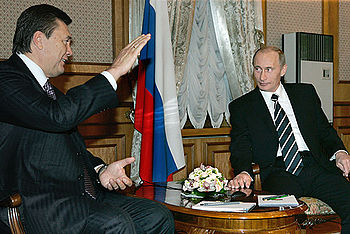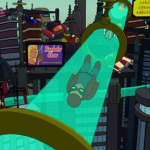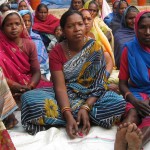Oil & Gas consultant and a sports commentator Adebisi Osunneye writes about his soccer passion and what it means to have the World Cup in Africa. For more of his soccer reflections see: http://nigeria.worldcupblog.org
In Football, or soccer as called in the US, the FIFA World Cup which holds every 4 years is the biggest tournament world over. It kicks off on the continent of Africa, South Africa to be precise. Viewership of the past mundial shows it is the biggest sports gathering after the Olympics and some matches actually return the highest single viewership for any sports event.
So it’s a big thing taking place in …cities South Africa between the 10th of June and the 11th of July 2010.
32 countries have qualified after rigorous qualification matches within their various continents going through different formats. The participating countries are grouped as follows:
Africa 6, Europe 13, Asia & Middle East 4, Oceania 1, North America 3 and South America 5
Group A. South Africa, Mexico, Uruguay & France
Group A involving the hosts South Africa looks a very fair group for all, with only France having an array of soccer stars so can be said to have an edge. But the French had a tough qualifying campaign, having to go through the playoffs and the controversial Thiery Henry’s handball assist that ended the journey for the Irish. The South Africans would be playing with a lot of passion and determination in front of their home fans and it would be very difficult to defeat. The team has been together for a few years now and should exhibit a solid team play but would this be enough? For Mexico who just lost a friendly to England at Wembley, they come to the mundial with a lot of enthusiasm. I am sure their hopes lie in the fact that the team keeps improving per time, it’s a blend of old and youth and do understand themselves very well. Uruguay would find it extremely tough coming out of this group even with their captain the former Manchester United player, Diego Forlan who is a very technical and clinical finisher. Would he be enough to motivate his colleagues? Time will tell
Prediction:
France and Mexico
Group B. Argentina, Nigeria, Korea Republic (South Korea) & Greece
I am a bit biased here as a Nigerian as I want my country to advance to the next round although preparation can be said to be non-existent in the fact that the ‘new’ manager has just about 3 weeks to tinker with the team before the first match. The good side however is the fact that he has retained the bulk of the team he met on ground which means he would only need to instill his own tactics and way of play within a group that already understand each other. All the team needs is a draw in the first game against Argentina. Talking about Argentina, they are surely clear favorites; anyway they are used to being classified as such. With the current world footballer of the year Lionel Messi, Milito of newly crowned European Champions League winners Inter Milan, Liverpool’s Mascerano, Tevez, Real Madrid’s slippery Higuian and a host of other world class talents, you will be kidding yourself to dismiss them in one go. But anything is possible in football; they lost out in the first round in 2002 despite parading the likes of Batistuta, a legend in Florence. These boys of a football great Maradona are in tip top shape and are sure ready to thrash opponents but would this happen? Where would I place Greece and South Korea but in a high place of respect as both teams are very technical and disciplined. The Greeks showed their team work stuff to win the European championships 2004 surprising all and sundry and they still have the same Manager today. For the South Koreans, they will rely on their quick and direct play and are being led by J Sung Park, a darling at Old Traford, Manchester.
Prediction:
Argentina and Nigeria
Group C. England, USA, Algeria & Slovenia
It is only the second place up for grabs in this group as England are having the best shot at winning the World Cup since 1990 semi-finals placing. They come in with a very balanced team in all departments having a very solid spine. They have Wayne Rooney, Steven Gerrard /Frank Lampard, John Terry/Rio Ferdinand and David James or Robert Green. The USA has an effective team that showed what they can do at the last FIFA Confederations Cup defeating the favorites Spain. I actually do not see the Algerians coming up with anything spectacular apart from being decent. For the Slovenians they will need all the luck in the world.
Prediction
England and USA
Group D. Germany, Australia, Serbia & Ghana
Another group where I do not expect any surprise, because I don’t think the Australians nor do I think the Ghanaians have what it takes to go past Germany and Serbia. Ghana just announced that their biggest talent in a decade, Chelsea’s Micheal Essien would be missing; this will cost them a lot. Australia have been very decent and disciplined of late and this present crop are the ones to do it except that they face an ever dedicated German machine and enthusiastic Serbians
Prediction:
Germany and Serbia
Group E. Netherlands, Denmark, Japan & Cameroon
This is a group with highly technical footballing countries, playing the Scandinavians is never easy. They are all known for their organizational abilities. But the Danish guys will find it tough with Cameroon and Japan. The Japanese are enjoying a very settled team with great ambitions and it is sure they are ready to pounce on any opportunity offered by fellow Group E rivals. With a team filled with Sniejder, Ajen Robben, De Jong are ever so total in their display, it would be Netherlands fault if they do not qualify from this group. Cameroon have a huge task ahead of them. They are fond of featuring veterans and this may be their undoing, except they don’t would they make it to the second round. Do I stick out my neck for the Japanese, yes I do. Why? They have had a decent run in and their local league has really stabilized to give them a lot of confidence coming into this World Cup. Or maybe I just want some surprises to spice up the competition
Prediction:
Netherlands and Japan
Group F. Italy, Paraguay, New Zealand & Slovakia
Looks the defending Champions are not in the league they were 4 years ago as most of their players are not exhibiting the standards they are known for likewise coming together as a National side has not shown anything different. It’s a plus they have a relatively okay group with no disrespect to other members of this group. The Paraguayans started the South American qualifiers on a high tempo but they seem to be struggling at the crucial time. Slovakia did the giant killing on Russia so must be very confident but the New Zealanders I think are just very happy to be here.
Prediction:
Italy and Slovakia
Group G. Brazil, DPR Korea, Cote D’Voire & Portugal
Toughest call for me, this group would be extremely close looking at the quality of stars represented here. The DPR Korea should be prepared to enjoy themselves out there as the other three countries would look at their match ups as possibilities of taking goals advantage but I warn do not take any country for granted. Brazil, the ‘biggest’ nation in the world of football would find it tough, have never failed to advance as long as I can remember but should not be thinking of picking all the points as usual. Cote D Voire are tipped as the best African Nation going into this tournament but the appointment of sacked former England and Mexico manager, the Swede Goran Ericsson has put doubt in a lot of peoples minds. Ronaldo in the Portuguese side is a huge asset but have they got it right as a team? Would they not show boat having a lot of skillful players? This is tough to call. Brazil remain tournament favorites
Prediction
Brazil and Cote D Voire
Group H. Spain, Chile, Switzerland & Honduras
The European champions piggy bank on the form of the Spanish club side Barcelona to display one of the best football styles ever played in the game. They are the 3rd of the favorites up there with England and Brazil in no particular order. They need Xavi Hernandez, Fernando Torres and Andre Iniesta to be fit and going. I expect a comfortable group matches for them and do expect Honduras to spring a surprise on Chile and Switzerland. The Swiss are always very effective and could pose a challenge. For the Chileans they hardly ever rise to their potential and remain in the shadow of other top South American countries. Would they prove themselves capable this time?
Prediction
Spain and Honduras
You just have to be part of this excitement wave that will hold over 40% of the world’s population a month long. For product sponsors this is definitely time to show case your brand to the largest audience possible.
And for fans following their dear nations and preferences, I advise we guard our hearts as anything is possible.








 PICTURE IT: December 2040 AD. The automatic truck just delivered my grocery ordered by my refrigerator. Upps … I forgot to send it a reminder about our Friday Steak Party. I wanted my refrigerator to order six T-bones from the nearby lab that specializes in beet-colored T-bones. Some of my guests are coming by the robot driven 6.0 Get You There Taxis (damn – I always loved talking to the taxi drivers in big cities, no more.. ). In this world more and more people are either unemployed or employed by marketing agencies, social platforms, entertainment companies, ideas labs etc.
PICTURE IT: December 2040 AD. The automatic truck just delivered my grocery ordered by my refrigerator. Upps … I forgot to send it a reminder about our Friday Steak Party. I wanted my refrigerator to order six T-bones from the nearby lab that specializes in beet-colored T-bones. Some of my guests are coming by the robot driven 6.0 Get You There Taxis (damn – I always loved talking to the taxi drivers in big cities, no more.. ). In this world more and more people are either unemployed or employed by marketing agencies, social platforms, entertainment companies, ideas labs etc.




